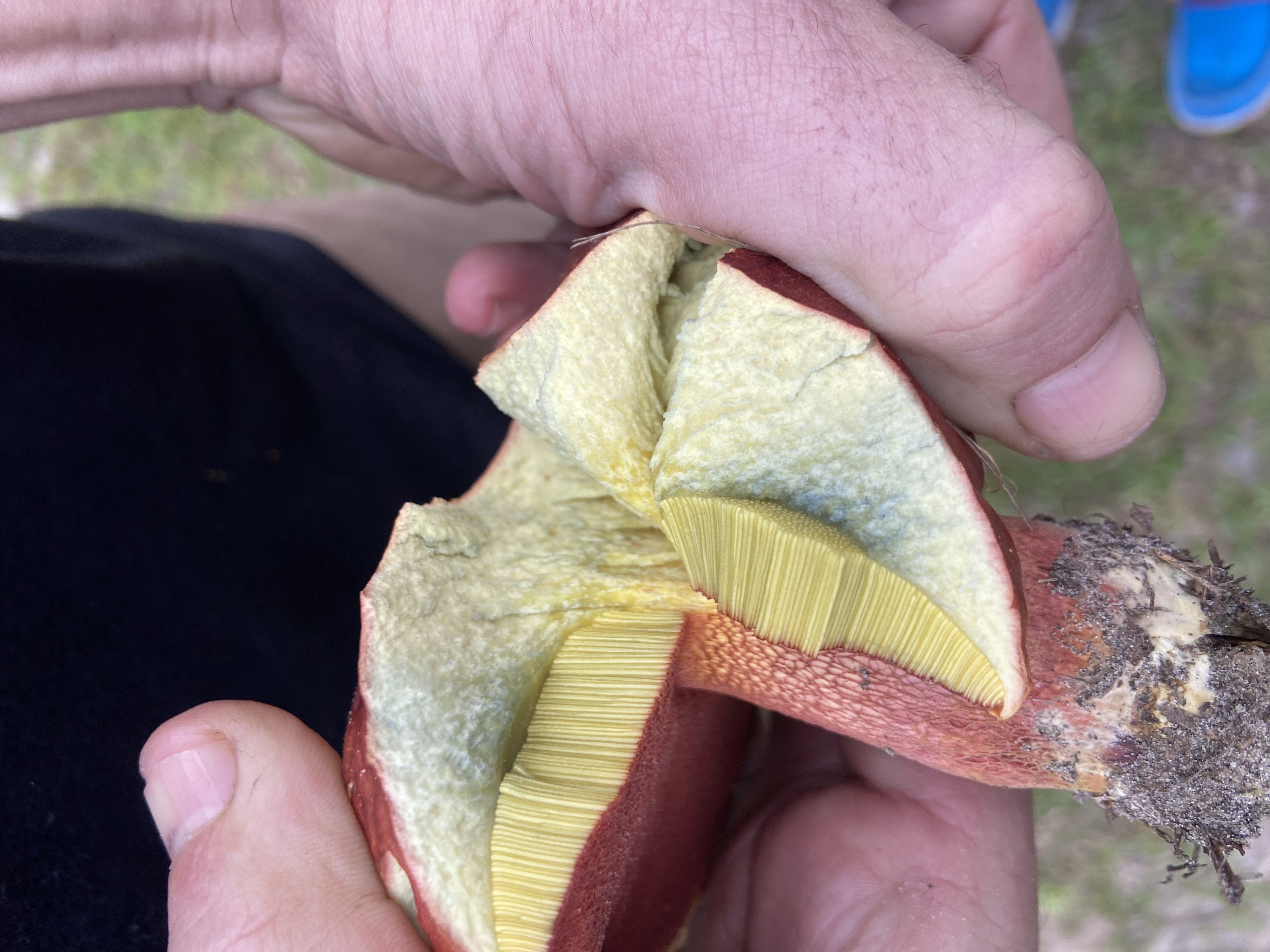Sensitive Bolete
Boletus sensibilis
WARNING: Blue-Staining Bolete Identified - Potential Gastrointestinal Toxin

1 / 3
Toutes les images (3)
Caractéristiques clés
- Cap reddish-orange
- smooth
- Hymenium deep bright yellow (tubes)
- Flesh stains blue rapidly upon cutting
- Robust
- thick stem
- reddish base
- Mycorrhizal association (soil/grass)
Couleur :
Reddish-orange cap, bright yellow tubes, pale yellow context
Odeur :
Unknown
Mode de croissance :
Single
Environnement :
Soil
Habitat et distribution
Habitat :
Grassland or lawn, likely near host trees
Distribution :
North America (primarily Eastern)
Saisonnalité :
Summer to early Fall
Valeur économique
Demande du marché :
None - toxic
Gamme de prix :
N/A
Usage commercial :
None
Informations sur la toxicité
Symptômes :
- Nausea and vomiting
- Severe diarrhea
- Abdominal cramping
Délai d'apparition :
30 minutes to 3 hours
Premiers secours :
- Seek immediate medical attention
- Maintain hydration
Contacts d'urgence :
- 911 (US)
- Poison Help (US): 1-800-222-1222
Espèces similaires
Satan's Bolete
Rubroboletus satanas
Différences clés :
- Pores typically red or orange-red
- Stem often bulbous and reticulated
Huron Bolete
Boletus huronensis
Différences clés :
- Often associated with conifers (hemlock)
- Cap usually paler brown/tan
Bitter Bolete
Caloboletus calopus
Différences clés :
- Stem usually features prominent red reticulation
- Taste is extremely bitter
Action recommandée
Do not consume. Securely dispose of specimen. Wash hands thoroughly.